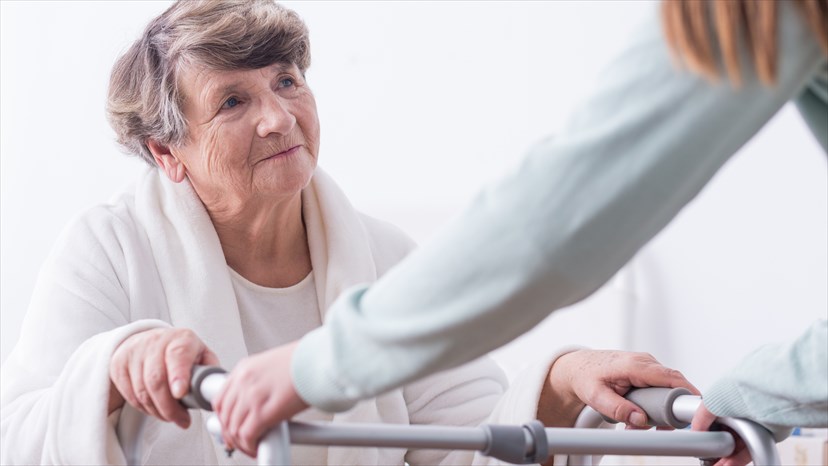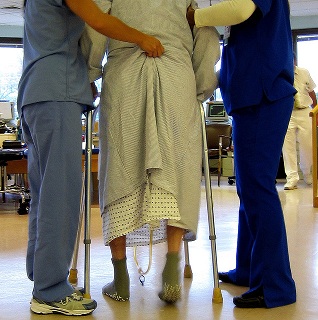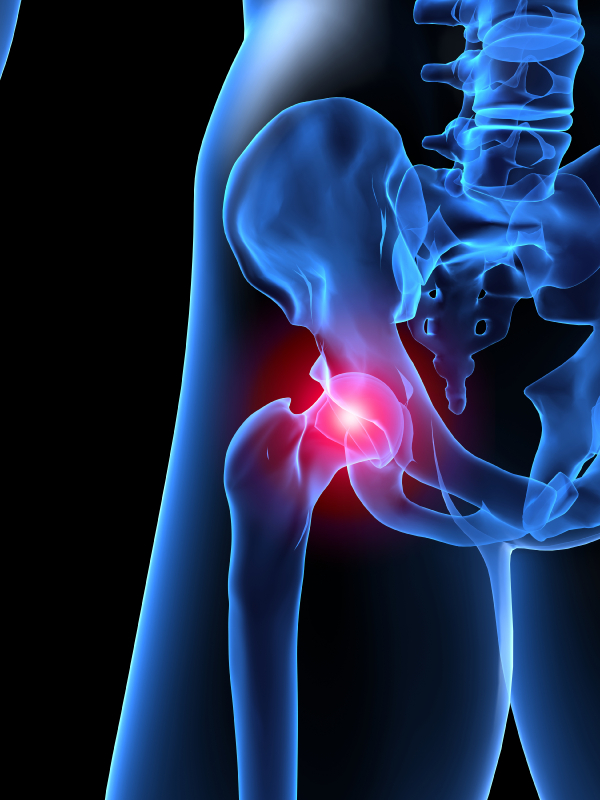
Description:
Most hip fractures occur in one of two locations in the thigh bone (Femur).
Two places where Hip fractures can occur:
- The femoral neck(Neck):
This area is located in the upper portion of the femur, just below the ball part (femoral head) of the ball-and-socket. joint.

- The Intertrochanteric region(IT):
This region is a little farther down from the actual hip joint, in the portion of your upper femur that extended outward.

Symptoms:
- Inability to move immediately after a fall.
- Severe pain in the hip or groin.
- Inability to put weight on the affected side.
Treatment:
Surgical:
The type of surgeries depends on the location and severity of the fracture, whether the broken bones are improperly aligned (displaced fracture), age and the underlying health conditions. Options include:
1.Internal Fixation:
Metal screws +/- plates are inserted into the bone to hold it together whilst the fracture is healing. In IT fractures screws are attached to a metal plate (DHS) that runs down the femur. Nails could also be used for fixation.
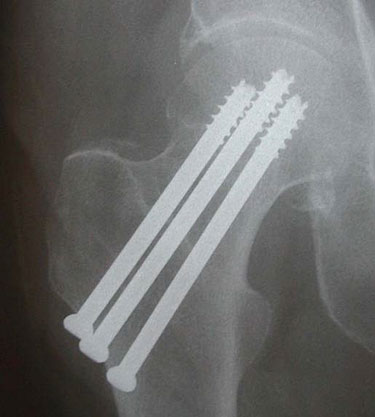

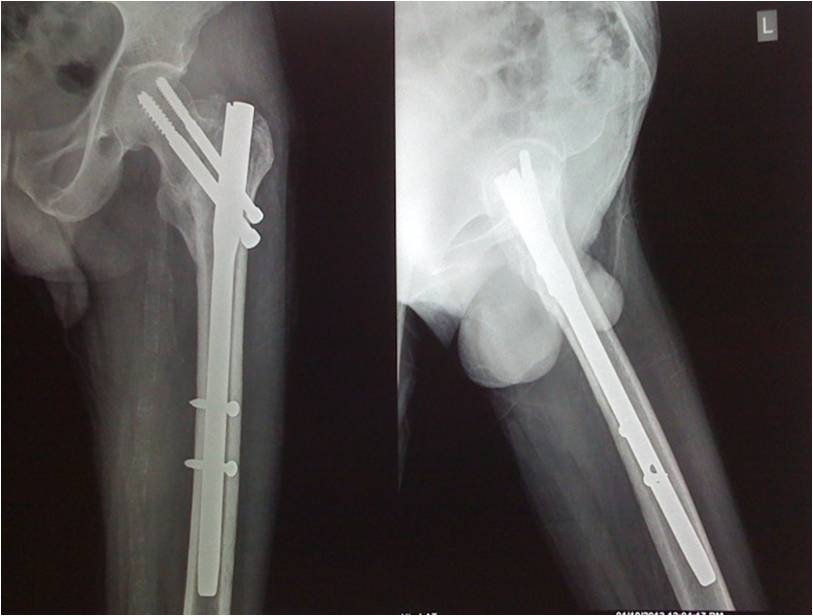
2.Total hip replacement:
The upper femur and the socket in the pelvic bone are replaced with prosthesis. Total hip replacement associated with better long-term outcomes for healthy adults who can live independently.

3.Partial hip replacement: If the ends of the broken bone are displaced or damaged, the top end of the femur is removed and replaced with a metal ball (prosthesis). Partial hip replacement may be recommended for adults who have other health conditions or cognitive impairment or who no longer live independently.
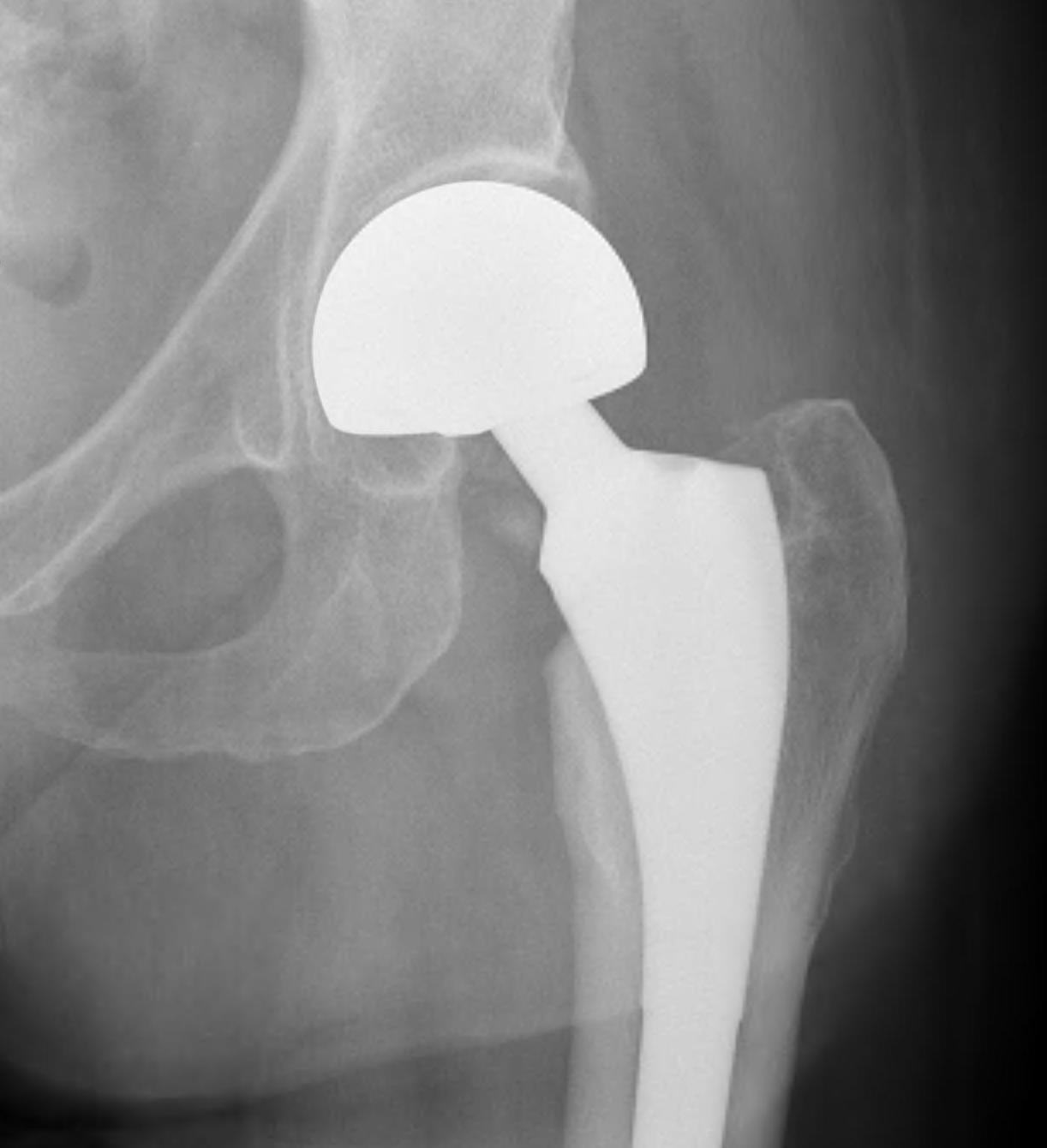
Rehabilitation:
- Depends upon the type of surgery:
- In case of internal fixation with metal screws and plates, patients are advised not to bear weight for atleast 6 weeks.
- In case of Hemi replacement or Total replacement patients will be moved out of the bed the day after surgery.
- Range-of-motion and strengthening exercises.
- Physiotherapist will teach the techniques for independence in daily life, such as using the toilet, bathing, dressing and cooking.
- Physiotherapist will determine if a walker or wheelchair may help to regain mobility and independence.
